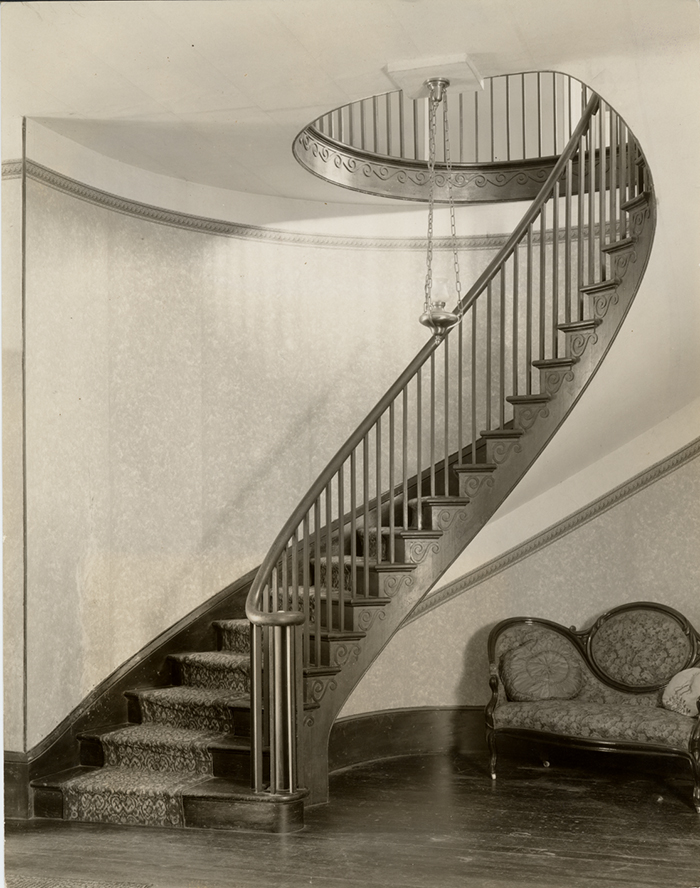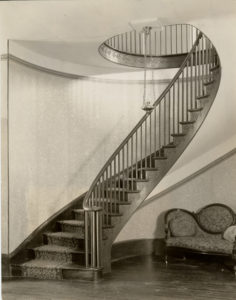Live Oaks Plantation
The plantation chapel at Live Oaks, built for the enslaved workers in 1840, is the last to survive in Louisiana.

Courtesy of Louisiana State Museum.
The spiral staircase in Live Oaks Plantation in Iberville Parish is suspended from the curved inner wall, without any support from the floor.
Live Oaks Plantation is listed on the National Register of Historic Places; it is a private home and not open to the public. One of the live oak trees on the property is listed by the Live Oak Society as being among the largest and oldest in the United States.
Charles H. Dickinson, along with his fourteen-year-old bride, Anna Turner, came to Louisiana from Tennessee in 1828, almost two dozen years after his father died in a duel with Andrew Jackson in 1806. The land was deeded to Dickinson by his guardian and maternal grandfather, Capt. Joseph Erwin, whose family owned large tracts of land in Iberville Parish. Dickinson developed a sugar plantation on the land, and in 1838 he built Live Oaks, a two-and-a-half-story house of pegged cypress, perhaps incorporating an earlier structure of 1828. The house has a two-story gallery with square columns and a central entrance opening to a twenty-foot-wide central hall. At the rear of this hall, where it widens to twenty-four feet, is a spiral staircase suspended from the curved inner wall, without any support from the floor. The house stands beside Bayou Grosse Tete, near Rosedale.
Of the two dependencies flanking the house at the rear, one originally was a combination smokehouse and slave quarters (only one room of this brick structure survives); the other was a kitchen, although the present building is a reconstruction on the old foundation. A rectangular brick chapel to the left of the house, built around 1840 for enslaved workers—and the only surviving plantation chapel in Louisiana—has an entrance on the gable end and three windows along each side. It was later used as a schoolhouse and as an Episcopal chapel until the Church of the Nativity was built. Behind the chapel, a brick tomb holds iron caskets cast in the form of the human body, with sliding metal doors that could be opened to view the deceased’s face through a small glass area. The Smithsonian Institution dated the caskets to circa 1830, and they are said to have been shipped from Spain to Cuba and then to New Orleans.
Adapted from Karen Kingsley’s Buildings of Louisiana, part of the Buildings of the United States series commissioned by the Society of Architectural Historians (www.sah.org) and published by Oxford University Press.
